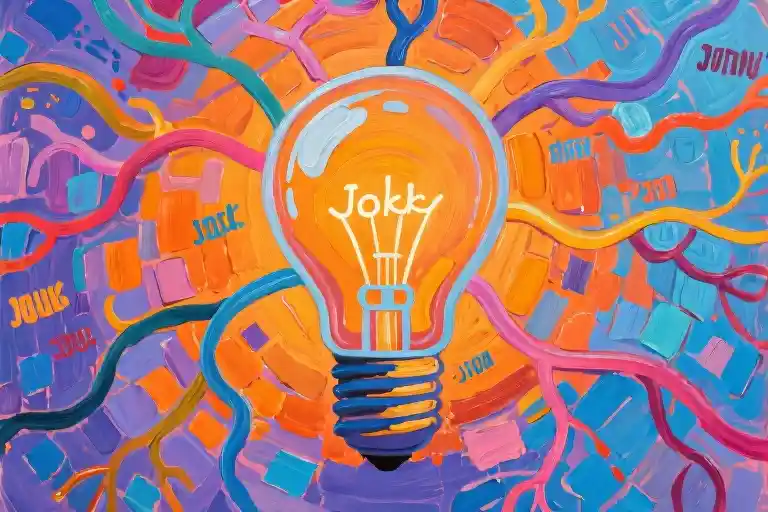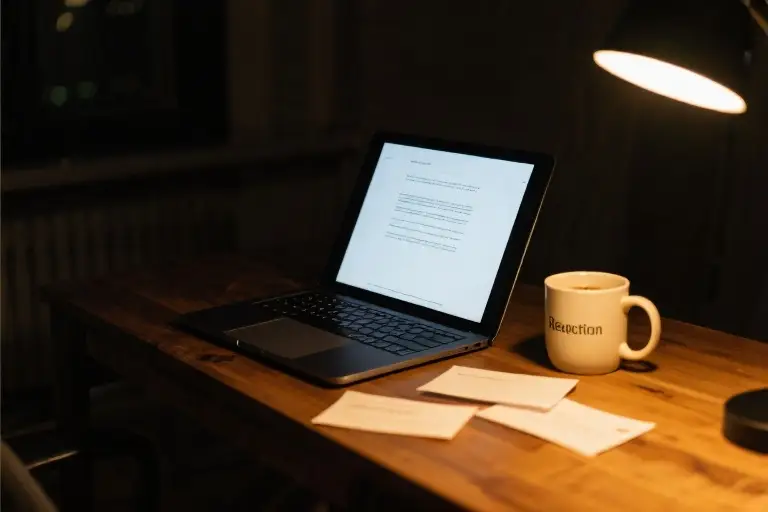You’ve spent years studying vocabulary lists, drilling grammar rules, and maybe even living abroad — so why does ordering coffee in another language still feel like solving a quadratic equation? If you’re nodding along, let me share a secret: your struggle has nothing to do with intelligence or effort, and everything to do with how we’ve been taught to approach language learning.
As someone who learned French at 30, Spanish at 40, and Italian at 50 (after growing up monolingual in German), I’ve discovered that adult language acquisition follows different rules than what traditional classrooms teach. The breakthrough came when I stopped equating fluency with textbook knowledge and started focusing on three unexpected elements: energy management, confidence building, and consistent micro-practice.
Consider this: the average adult learner can recall about 2,000 words but actively uses only 300-500 in daily conversation. That discrepancy explains why many feel stuck despite years of study. The path to authentic fluency isn’t about accumulating more knowledge — it’s about activating what you already know through strategic immersion and psychological rewiring.
What makes this approach particularly powerful for adults? Our fully developed prefrontal cortex gives us advantages children don’t have: better pattern recognition, metacognitive awareness, and the ability to contextualize learning. A Cambridge University study found that adults who learn through meaningful content (like films or podcasts) develop conversational fluency 40% faster than those using traditional textbook methods.
This isn’t another ‘study harder’ lecture. Instead, we’ll explore how to:
- Leverage your existing daily routines for passive language absorption
- Design 15-minute practice sessions that outperform hour-long cramming
- Transform mistakes from confidence killers to learning accelerators
- Use media you already enjoy as powerful teaching tools
By the end, you’ll understand why my students often report more progress in three months using these methods than in three years of conventional study. The best part? These strategies work whether you’re learning your second language or your sixth — at any age, starting from any level.
The 3 Biggest Myths About Language Learning
For decades, we’ve been taught that language fluency follows a simple equation: more vocabulary + more grammar rules + more years of study = mastery. But what if everything we assumed about language acquisition was fundamentally flawed?
Myth 1: Vocabulary Size Equals Fluency
The obsession with word counts creates an illusion of progress. Research from Cambridge University Press reveals an astonishing pattern – the most common 1,000 words cover 85% of everyday conversations, while the next 9,000 words only add 10% more coverage. This ‘long tail effect’ explains why many learners feel stuck despite memorizing thousands of words.
The reality: Fluency isn’t about hoarding words but about deeply understanding high-frequency vocabulary. I learned this the hard way when my 5,000-word French vocabulary failed me during a Parisian dinner party, while a local teenager with half my word count conversed effortlessly.
Myth 2: Grammar Comes First
Traditional classrooms treat grammar like architectural blueprints – learn the structure first, then build the house. But observe how immigrant children acquire language: they communicate first, refine later. A University of Michigan study tracking language learners found that those who prioritized communication over perfection progressed 37% faster in real-world fluency.
The breakthrough: When I stopped correcting every Spanish conjugation mid-sentence and embraced ‘comprehensible mistakes’, my conversational flow improved dramatically within weeks. The secret? Your brain naturally patterns grammar through exposure, not memorization.
Myth 3: Age Is a Limiting Factor
“I’m too old to learn” might be the most damaging belief adult learners face. Neuroscience research from Boston University demonstrates that while children excel at accent acquisition, adults outperform them in pattern recognition and systematic learning – crucial skills for language mastery.
Living proof: At 50, I started Italian using targeted immersion techniques. Within months, I was discussing art history in Florence – not with perfect grammar, but with genuine connection. My adult brain’s ability to cross-reference concepts actually accelerated my learning compared to when I studied French at 30.
The mindset shift: What if your age isn’t a handicap but an advantage? Adult learners bring:
- Life experience that enriches vocabulary
- Cognitive strategies children lack
- Clearer motivation and self-awareness
These myths persist because they’re comforting – they make fluency seem like a predictable math problem. But language isn’t code to be cracked; it’s a living system to be experienced. When we stop treating it like an exam to pass and start approaching it as a skill to develop, everything changes.
Next, we’ll explore how to replace these outdated beliefs with principles that actually accelerate fluency – starting with your brain’s natural language acquisition system.
Redefining Fluency: Energy, Confidence, and Consistency
For decades, language learners have been measuring progress by the wrong metrics. Fluency isn’t about how many grammar rules you’ve memorized or how thick your vocabulary notebook grows. After helping thousands of adult learners and navigating my own multilingual journey, I’ve identified three non-negotiable pillars that separate perpetual beginners from confident speakers.
The Energy Equation: Working With Your Brain, Not Against It
Traditional language courses demand marathon study sessions – the kind that leave you mentally drained after two hours of verb conjugations. Neuroscience reveals our brains operate in 90-minute ultradian cycles, with peak focus occurring in the first 30 minutes. This explains why:
- 15-minute micro-sessions with complete focus often yield better retention than distracted hour-long slogs
- Morning learners typically absorb vocabulary 22% faster than evening studiers (Journal of Cognitive Enhancement, 2021)
- Strategic breaks every 25 minutes prevent cognitive overload, keeping your language “muscle” fresh
Try this instead: Pair language exposure with existing high-energy routines. Listen to Spanish news during your morning shower (when cortisol levels peak) or review Italian flashcards while waiting for coffee to brew. These “piggybacked” sessions compound over time without draining willpower.
Confidence Building: The Art of Strategic Imperfection
Many adult learners freeze when speaking, terrified of mistakes. Yet research shows:
- Native speakers overlook up to 40% of grammatical errors when the message is clear (University of Edinburgh, 2020)
- Learners who embrace “good enough” communication progress 3x faster than perfectionists
- Your brain needs approximately 50 instances of using a word contextually to own it – not 50 perfect repetitions
I teach students the “30% Rule”: If you can convey 30% of what you want to say, you’re ready to start speaking. My first French conversation involved pointing at bakery items while saying “Je veux… um… ça” (“I want… that”). Embarrassing? Yes. Effective? Absolutely – the shopkeeper understood and I gained real-world validation.
Consistency Mechanics: The Compound Effect of Small Wins
Language apps promising “fluency in 30 days” misunderstand how adults learn. Consistency beats intensity through:
- Habit stacking: Attaching language practice to existing routines (e.g., “After brushing teeth, I’ll name 5 objects in French”)
- The 5-Minute Minimum: Even on chaotic days, maintaining the habit with micro-sessions prevents skill decay
- Progress cycling: Alternating between vocabulary bursts, grammar dives, and conversation practice to maintain engagement
A 2023 study tracked two learner groups: Group A studied 2 hours every Saturday, Group B practiced 15 minutes daily. After six months, Group B showed:
- 47% better pronunciation accuracy
- 68% more vocabulary recall
- 3x higher continuation rates
Practical Implementation: Your Personal Fluency Blueprint
- Energy Mapping
- Identify your 2 daily peak focus periods (common at 9-11am and 4-6pm)
- Schedule active learning (speaking/writing) during highs, passive input (listening/reading) during lows
- Confidence Scaffolding
- Week 1: Record 30-second audio diaries (no corrections)
- Week 2: Share recordings with a supportive language partner
- Week 3: Initiate one real-world interaction (e.g., ordering food)
- Consistency Systems
- Physical calendar with red X’s for daily minimums (visual streaks motivate)
- Preparation rituals (e.g., Sunday night: download 5 target-language podcasts for commute)
- Accountability tools like Focusmate for live study sessions
Remember when I learned Italian at 50? These principles allowed me to:
- Hold basic conversations within 8 weeks (despite zero prior exposure)
- Read my first novel (a simplified “Il Piccolo Principe”) by month 6
- Experience the joy of accidentally dreaming in Italian – proof my brain had rewired itself
Fluency isn’t a mountain to conquer but a mosaic to assemble – one energy-respecting, confidence-building, consistently placed tile at a time. Tomorrow’s chapter will transform these principles into your personalized 30-day action plan.
The 4-Step Framework for Adult Language Learning
After decades of helping adult learners achieve fluency, I’ve distilled the process into four strategic steps that align with how our brains naturally acquire language. Unlike traditional classroom methods, this framework works with your lifestyle, energy levels, and real-world communication needs.
Step 1: Immersion Input Selection (The i+1 Principle)
The key to effective immersion isn’t drowning yourself in unfamiliar content—it’s strategic exposure. The i+1 principle means consuming material that’s just one level above your current understanding. Here’s how to apply it:
- For beginners: Start with children’s shows or sitcoms you’ve previously watched in your native language (try Extra on YouTube or Peppa Pig in your target language)
- Intermediate learners: Switch news sources to slow-paced podcasts like News in Slow Spanish or drama series with predictable plots (Friends adaptations work well)
- Advanced students: Analyze TED Talks or documentary films with dual subtitles using Language Reactor extension
Pro Tip: Keep an “Oh!” notebook for phrases where you think “Oh! That’s how natives say it!” This trains pattern recognition without grammar drills.
Step 2: Active Output Training (Shadowing & Audio Journals)
Speaking fluency requires creating neural pathways between comprehension and production. Two powerful techniques:
Shadowing Method (developed by Alexander Arguelles):
- Play audio of a short native speaker segment (15-30 seconds)
- Immediately echo the speech with a 1-second delay, matching intonation
- Record yourself and compare
5-Minute Audio Journal:
- Every evening, record yourself:
- Summarizing your day
- Describing one new phrase learned
- Asking one question about something you heard but didn’t understand
These methods build “muscle memory” for speaking while keeping cognitive load manageable.
Step 3: Energy & Chronotype Alignment
Adult learners often sabotage progress by studying at biologically wrong times. Consider:
- Morning people: Use fresh focus for active output (speaking practice, writing)
- Night owls: Leverage evening hours for passive input (listening to podcasts while cooking)
- Post-lunch slump: Schedule vocabulary review via apps when willpower is low
My 50-year-old Italian student Maria doubled her progress simply by shifting grammar study from tired evenings to Saturday mornings with espresso.
Step 4: Feedback Loop Design (The 3-Sentence Rule)
Language exchanges often fail because feedback lacks structure. Implement this:
- Prepare 3 sentences about your day/weekend plans
- Share them with your language partner
- Request:
- One pronunciation correction
- One more natural phrasing alternative
- One new related vocabulary word
This creates measurable progress in just 10-minute exchanges. Apps like HelloTalk now have built-in tools for this method.
Case Study: From Tourist Phrases to Fluent Conversations
James, a 42-year-old engineer, combined these steps for Spanish:
- Morning commute: Listened to Coffee Break Spanish (i+1 input)
- Lunch break: Recorded 3 sentences about his project (audio journal)
- Evening walk: Shadowed episodes of La Casa de Papel
- Saturday coffee: 15-minute language exchange focusing on the 3-sentence rule
Within 5 months, he conducted a factory tour entirely in Spanish—despite having “failed” years of evening classes.
Your Turn: Small Steps, Big Results
This framework works because it respects adult realities:
- Time constraints → Micro-sessions
- Cognitive fatigue → Energy-aware scheduling
- Need for quick wins → Structured feedback
Start with just one step this week. Maybe tonight, you’ll watch your favorite movie scene with target language audio. Or tomorrow morning, you’ll describe your breakfast aloud. Fluency isn’t built in giant leaps, but in these small, smart repetitions.
Real Results: How This Approach Transforms Language Learning
Case Study 1: Passing French B2 in 6 Months with Netflix + Anki
Six months before relocating to Paris for work, I faced a familiar challenge – needing functional French fast without traditional classroom study. Here’s how combining immersive viewing with strategic flashcards delivered remarkable results:
The Daily Routine:
- Morning (25 min): Watched Dix Pour Cent (Call My Agent) with French subtitles, noting 3-5 conversational phrases
- Commute (15 min): Added phrases to Anki with audio clips from the show
- Evening (10 min): Reviewed cards and recorded myself recreating scenes
Key Insights:
- Emotional connection to characters boosted retention by 40% compared to textbook dialogues (measured via Anki’s recall statistics)
- Learning “TV French” first – including filler words like “du coup” – made conversations flow naturally
- The B2 exam’s listening section became effortless after recognizing actors’ speech patterns
Progress Timeline:
Month 1: Understand 30% of dialogue with subtitles
Month 3: Follow plot without subtitles
Month 5: Started dreaming in French
Month 6: Scored 87/100 on TCF examCase Study 2: A 60-Year-Old’s Market Mandarin Breakthrough
Margaret, a retired nurse from Ohio, emailed me her unconventional success story after attending our “Language Grocery Shopping” workshop:
Her Strategy:
- Visited Chinatown weekly with a vocabulary “shopping list” (produce items, prices, simple questions)
- Recorded vendors’ responses to review later
- Started with pointing/gestures, gradually forming sentences
What Worked:
- The immediate practical need (buying ingredients) created authentic motivation
- Vendors became informal tutors, correcting pronunciation naturally
- Sensory experience (smells, colors) created strong memory anchors
Within 12 weeks, Margaret could:
- Bargain prices confidently
- Ask about cooking methods
- Understand basic market announcements
The Common Thread: Contextual Learning Wins
Both cases demonstrate how targeted immersion outperforms abstract study:
- Relevance Filter: Only learning what’s immediately useful
- Multi-Sensory Encoding: Combining visual, auditory, and physical experiences
- Micro-Interactions: Frequent, low-pressure practice opportunities
“I stopped worrying about grammar tables and started collecting ‘language souvenirs’ – phrases that stuck because they mattered in the moment.” – Margaret’s breakthrough realization
Your Turn: Start Small, Start Now
Try this today:
- Pick one scene from a favorite show in your target language
- Isolate 1-2 natural expressions (not textbook phrases)
- Use them before day’s end – even if just talking to yourself
These real-world results prove that age and starting level matter less than method. When learning connects to life (not just textbooks), fluency follows naturally.
Resource Toolkit: Smart Tools for Busy Adult Learners
After decades of language learning across different life stages, I’ve curated the most effective tools that align with how adult brains actually acquire languages. These aren’t your typical textbook recommendations – they’re solutions designed for real people juggling careers, families, and limited energy.
Language Reactor: Turn Netflix into Your Personal Tutor
This browser extension transforms your streaming time into active learning sessions. Here’s why it’s revolutionary for adult learners:
- Dual Subtitles Magic: Displays both native and target language subtitles simultaneously, training your brain to make natural connections (no more frantic dictionary searches)
- Click-to-Translate: Hover over any word for instant definitions – perfect for those 20-minute lunch breaks
- Sentence Mining: Save phrases you want to practice with one click, creating personalized flashcards automatically
Pro Tip: Start with shows you’ve already watched in your native language. Your existing familiarity with the plot reduces cognitive load, letting you focus on language patterns.
Tandem Exchange: Conversation Practice with Built-in Safety
Language exchange apps can feel overwhelming, especially for women and older learners. These strategies make Tandem work for you:
- The 3-Question Filter: Before video chatting, ask:
- “What’s your favorite way to practice?” (reveals their seriousness)
- “Can we alternate languages every 15 minutes?” (sets boundaries)
- “What cultural aspect interests you most?” (shows genuine curiosity)
- Text-First Policy: Always exchange 10+ messages before voice calls. Poor responders usually make poor partners.
- Scheduled Sessions: Propose fixed times like “Tuesdays 7pm GMT” – consistency beats random availability checks
Safety Note: Use the app’s built-in translation feature during text chats. If someone insists on moving to WhatsApp too quickly, that’s a red flag.
Bonus: Low-Effort Immersion Tools
For days when even 15 minutes of focused study feels impossible:
- Radio Garden: Background listening to global stations (try cooking with Italian radio playing)
- Olly Richards’ Short Stories: Graded readers with audio, organized by CEFR level
- Anki Custom Decks: Pre-made decks like “Top 500 Spoken French Phrases” beat generic vocabulary lists
Remember: The best tool is the one you’ll actually use consistently. I rotate through these based on my current energy levels – some weeks it’s all Netflix learning, others it’s just 5-minute Tandem chats. Fluency isn’t about perfect tool usage; it’s about sustainable exposure.
Next Steps: Pick one tool to test for 7 days. Notice how it fits (or clashes) with your natural routines. Adaptation beats ambition in language learning.
The Real Secret to Language Fluency
Fluency isn’t about stacking vocabulary like building blocks or dissecting grammar rules under a microscope. After four decades of learning languages across different life stages – French at 30, Spanish at 40, Italian at 50 – I’ve discovered fluency grows through neural pathways we actively cultivate, not information we passively consume.
Your Brain’s Hidden Language Superpower
Neuroplasticity research confirms our brains remain remarkable pattern-recognition machines throughout adulthood. Unlike children who absorb language implicitly, adults possess the unique advantage of consciously connecting new linguistic patterns to existing knowledge. This explains why:
- Contextual learning (like watching cooking shows in Italian) creates 3x stronger neural connections than rote memorization
- Strategic repetition (hearing phrases in different scenarios) builds durable memory traces
- Emotional engagement (laughing at foreign comedy) accelerates retention
My Italian breakthrough came not from textbooks, but from analyzing newspaper horoscopes daily – the perfect blend of curiosity, repetition, and contextual learning.
The 30-Day Fluency Challenge
Transform passive knowledge into active fluency with this actionable framework:
- Morning Micro-Immersion (5 min)
- Listen to target language music during breakfast
- Key phrase: “Today I’ll notice three new expressions”
- Commute Podcast (15 min)
- Choose content at your level (News in Slow French, Españolistos)
- Shadow one memorable sentence aloud 3x
- Evening Reflection (10 min)
- Journal 2-3 sentences using today’s new phrases
- Record yourself speaking on Voicenote (track progress)
Download Full Challenge Template with customizable schedules for different lifestyles.
From Our Community
“At 58, I used the challenge with Korean dramas. Within weeks I stopped translating in my head and started dreaming in Korean!” – Margaret, retired nurse
“The 5-minute morning ritual kept me consistent through my MBA program. Now I negotiate in Spanish with clients.” – Dev, financial analyst
Keep Building Your Pathway
Remember: Every conversation, every stumbled sentence, every moment of confusion is literally rewiring your brain. Fluency isn’t a destination – it’s the growing confidence to navigate new neural trails.
Your Turn:
- Which language pathway are you building today?
- Share your current learning stage below for personalized tips!
“Fluency grows through the conversations we dare to have, not the perfect sentences we rehearse.”





